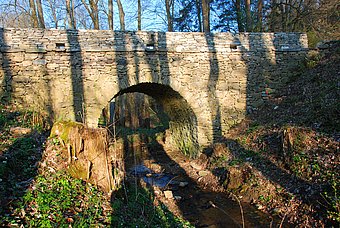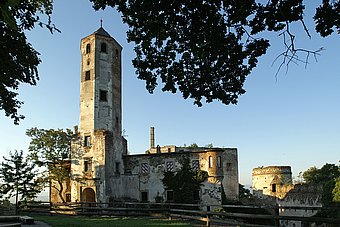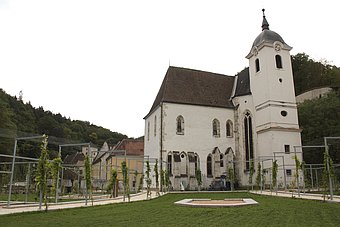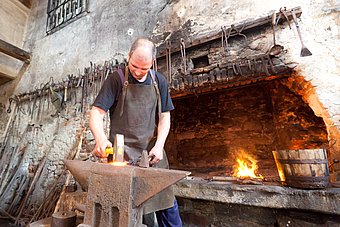On a journey of discovery in the Dunkelsteinerwald
Steep slopes on the Danube, extensive arable land in the south, quiet forests, grand views across the Danube valley and the foothills of the Alps, fabled ruins, wild roses and rosehips characterise the Dunkelsteinerwald region.
As early as the Palaeolithic Age, later for the Celts and Romans, the Dunkelsteinerwald was both a place of retreat and an important border between the Danube and the foothills of the Alps. Numerous Roman roads pass through the region. A relic from that time is the stone Roman bridge at Lanzing.
In the Middle Ages, the Dunkelsteinerwald was further secured as a border area, something that many castle ruins bear witness to. Churches and monasteries underscore the region's importance as a pilgrimage destination. Above all, the Baroque church in Maria Langegg remains to this day a much-visited place of reflection; the village also has a pilgrimage museum.
Here you can find further details to adventures around the Dunkelsteinerwald.
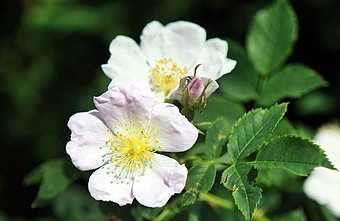
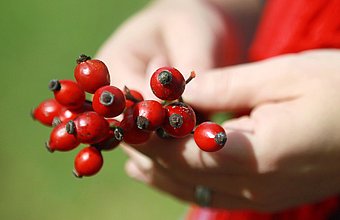
Wild roses and rosehips
A good 12 different kinds of wild rose have been native to the Dunkelsteinerwald rosehip pleasure region for centuries. Residents care for and cultivate the wild roses with a deep sense of commitment. To maintain the range of species, native varieties are constantly being planted.
The wild roses grow on the edges of the forests and adorn the towns and villages. They are an important habitat for numerous kinds of insects, butterflies, birds and mammals.
The wild roses are at their best from May to mid-July, when they are in full bloom and provide a reason for festivals and tastings of all things rose. After the wild roses have finished flowering, their fruits form: the rosehips, which are rich in vitamin C, are harvested in the autumn. The rosehips are called "Hetscherln" in the regional dialect.
Culinary delicacies are made from the wild roses and rosehips. The flowers are made into liqueur, castor sugar, syrup, wild rose ice-cream and refreshing desserts. The rosehips are transformed into jams and liqueurs. Rosehip must is used to refine sauces and goes well in chocolate.
Leading addresses for living, dining and shopping are the rosehip pleasure partners.
Outlooks and insights
Between the forests and expansive fields, there are outlooks at heights of up to 500 metres with wonderful 360-degree views: to the north over the Danube and the Wachau, to the south over the hills of the Mostviertel and to the Alps on the horizon.
The best-known viewpoint are the mediaeval castle ruins of Aggstein at Aggsbach-Dorf, which are perched above the Danube on a 300 metre-high rock. Visitors can enjoy a lovely view of the Wachau from this impressive complex. The view from the Ferdinandwarte lookout tower at Oberbergern also extends over the Danube and the Wachau.
A particularly lovely view into the foothills of the Alps can be had from the Hohenegg castle ruins in the southern Dunkelsteinerwald.
Trails and places of power
The Dunkelsteinerwald has a strikingly large number of churches. They are thought to have been built in locations that the Celts considered to be places of power. At the Aggsbach Charterhouse, the newly created meditation garden tells of the work done by the Carthusians. The monastery of the Servite Order at Schönbühel was lived in by monks until a few decades ago. The building and the Baroque church can be viewed on guided tours and during church services. In Maria Langegg, the Servite Order also ran a monastery, whose particularly impressive Baroque church was also a destination for pilgrims.
An extensive network of hiking trails criss-crosses the Dunkelsteinerwald, such as the Dunkelsteinerwald Round opened in 2014. A special feature are the fairytale hikes offered to visitors big and small by the storyteller Dena Seidl. A section of the Austrian Way of St. James also runs through the region, from Göttweig Abbey to Melk Abbey.
Marble and wood
In early times, people in the Dunkelsteinerwald region lived off the earnings from their mostly small farms. The mining of marble in marble quarries also played an important role. In this heavily forested area, wood was also an important source of income for charcoal makers, wooden shoe and shingle makers, broom makers and basket makers. The restored hammer mill in Aggsbach-Dorf bears witness to those times.
From the 18th century, wood was mainly needed for heating and transported on the Danube even as far as Vienna and Budapest. Wood plays an important role to this day. There are over 20 wood-processing companies in the Dunkelsteinerwald region – from saw mills and carpentry to joiners.


